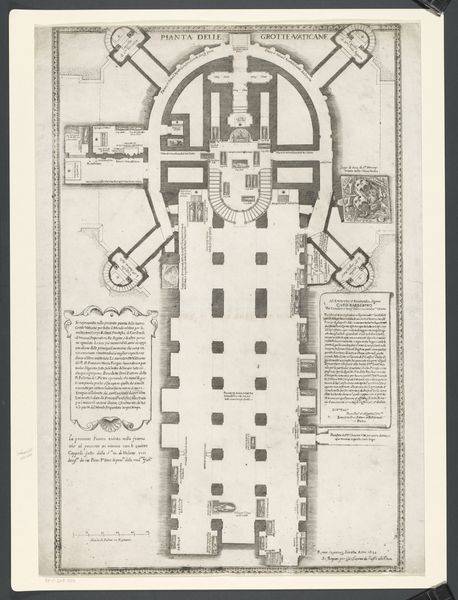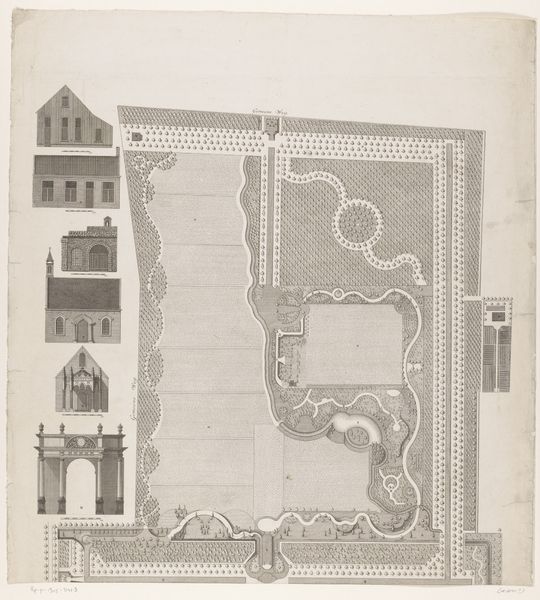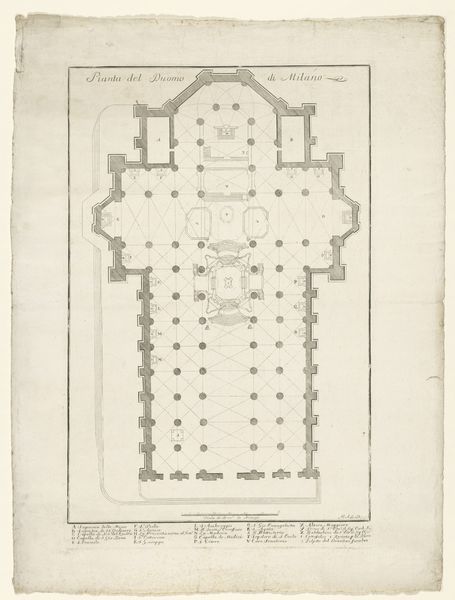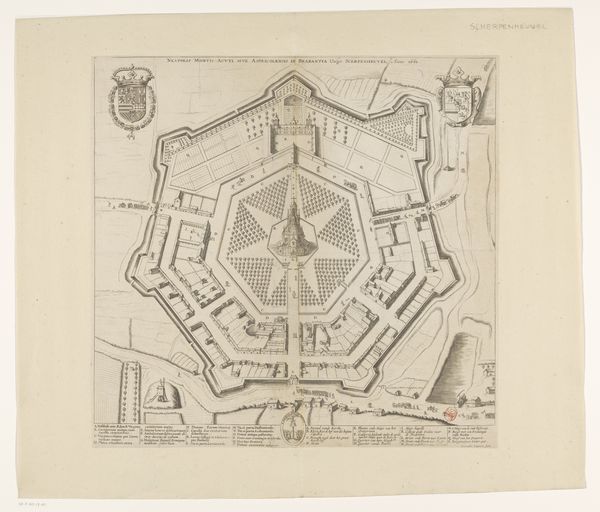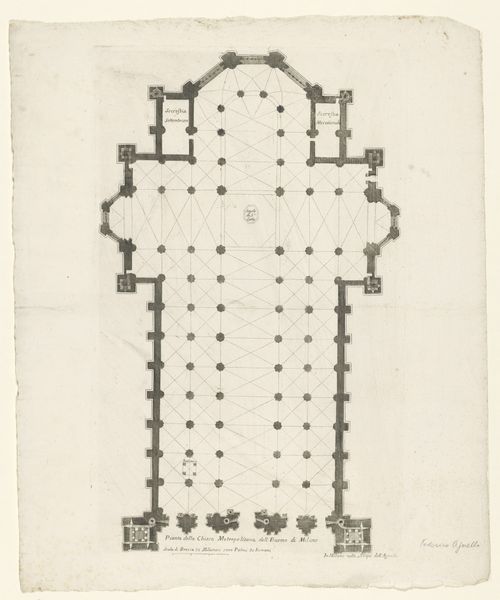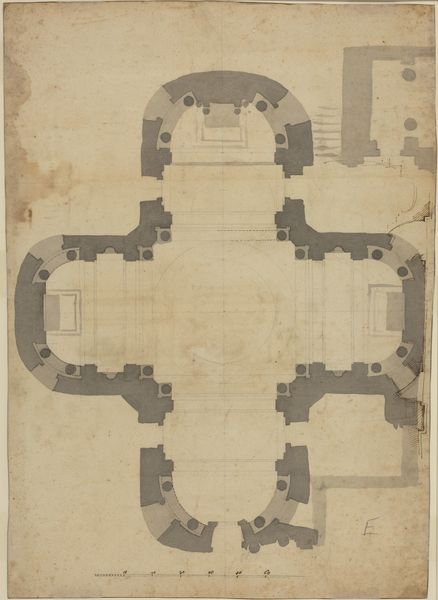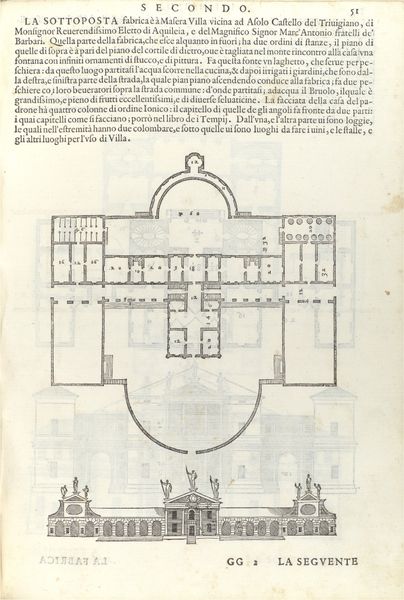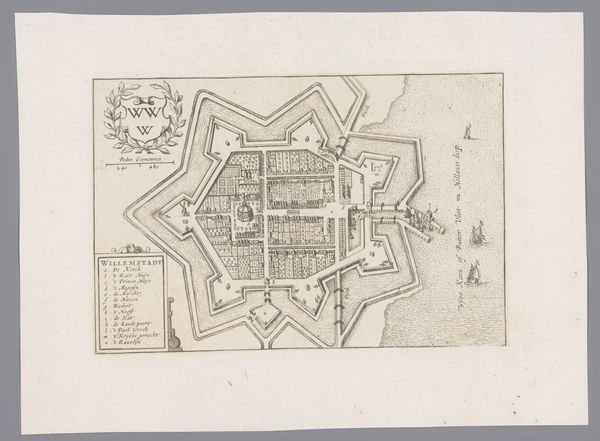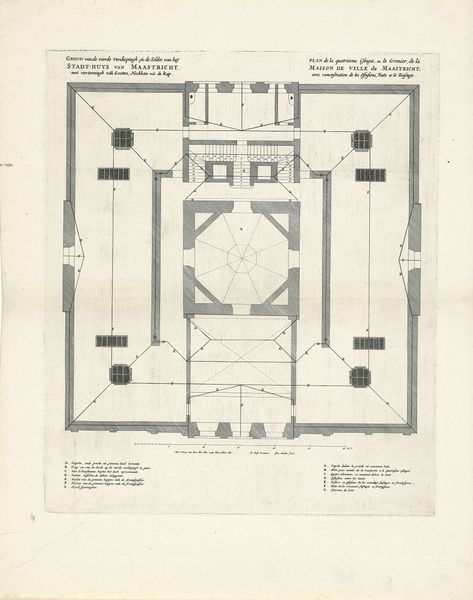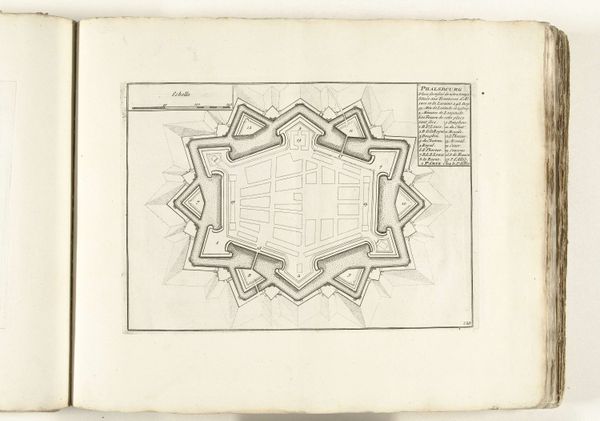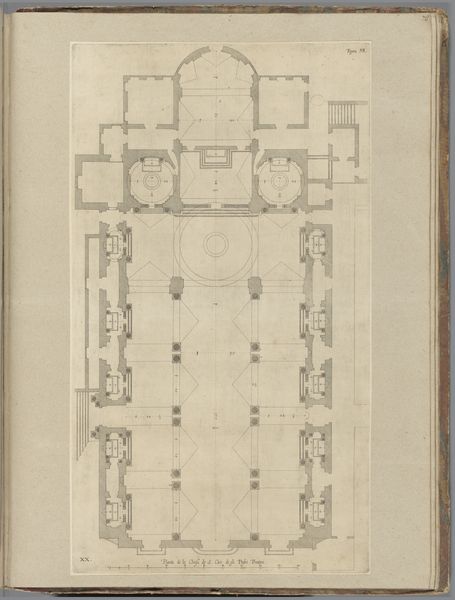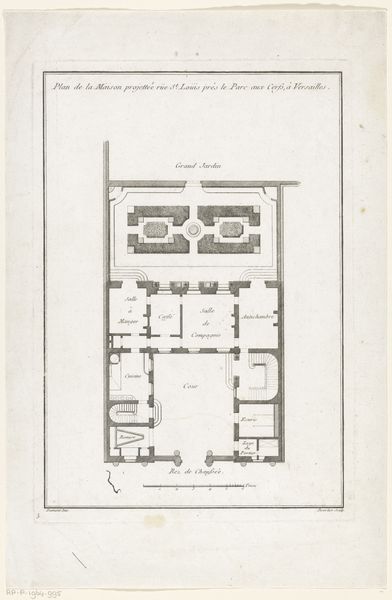
Plattegrond van de crypte onder de Sint-Pietersbasiliek te Vaticaanstad 1635
0:00
0:00
anonymous
Rijksmuseum
drawing, print, paper, engraving, architecture
#
drawing
#
baroque
# print
#
paper
#
geometric
#
cityscape
#
islamic-art
#
engraving
#
architecture
Dimensions: height 759 mm, width 486 mm
Copyright: Rijks Museum: Open Domain
Curator: At first glance, the stark linearity against the rounded apse strikes me as both balanced and unnerving. It’s architectural rigor married with…what? Constriction? Editor: We're looking at a print from 1635, now held at the Rijksmuseum, titled "Plattegrond van de crypte onder de Sint-Pietersbasiliek te Vaticaanstad," or roughly translated, "Floor plan of the crypt under St. Peter's Basilica in Vatican City." Curator: "Floor plan" hardly does it justice. Look at the intricate hatching! The use of line weight! It's almost a tapestry of pure form. I'm captivated by the geometries alone – circles, rectangles, all interlocking to form a cohesive whole. Editor: Its cohesion served a purpose. This engraving, crafted by an anonymous hand, circulated during a period of intense building and rebuilding in Rome, showcasing the basilica's evolving form and asserting papal authority through monumental architecture. These plans weren’t just documentation; they were statements of power. Curator: But look how the architectural forms speak! That dominating apse! It isn't just geometry; it's power rendered in shapes. The print anticipates a user's movement through the space via composition. The semi-circular steps create this formal and imposing curve. Editor: Indeed, this Baroque depiction coincided with a cultural fascination with death, relics, and subterranean spaces. Such meticulous details appeal to both patron and those participating in underground religious practices. Curator: It really pulls you in… But on a formal level, that detailed cross-hatching creates such visual depth... I’m curious about what the Baroque-era viewer might make of such an ordered view of something hidden and mysterious. Editor: These documents humanize the space. These artistic visualizations created access to those far and wide at a time of immense architectural growth in Vatican City. Curator: Perhaps, for the 17th-century viewer, this architectural "portrait" served as a symbolic key, offering visual entry into realms both earthly and divine, solidifying cultural order from the top-down, one carefully rendered line at a time. Editor: Ultimately, it prompts us to question who gets access to sacred spaces and how power manifests. The print’s historical and cultural implications go far beyond what is shown on its surface.
Comments
No comments
Be the first to comment and join the conversation on the ultimate creative platform.
